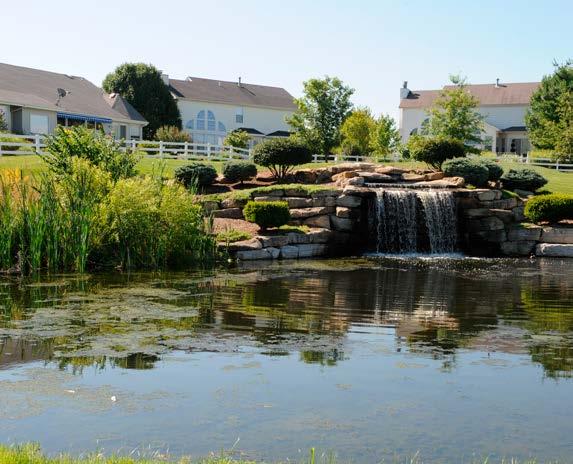
2 minute read
Supe’s On
Rob Schaff The Falls Golf Club
I have a lot of options to talk about as a superintendent in St. Louis. This time of year everything things seems to be going against you. Staffs get thin when the high school and college kids go back to school and it’s hard to get
everything done. This comes after dealing with the heat of the summer and the pressures of all the play that we continue to get at a record pace. So bear with us because we all know what has to get done it’s just sometimes we
don’t have the time, equipment, or the money to make everything look like the Masters. As past president of the MVGCSAA I know every course is different and trust me, all the area superintendents are doing their best to keep everything looking as nice as they can. In the fall and spring everybody has seen greens with Poa annua. I just want to give you a little information on a problem that has been around since I was born and will continue to be a problem well into the future. It drives superintendents crazy. It is identified as the most troublesome weed in managed turfgrass systems throughout the United States. Annual bluegrass (Poa annua) impacts most turfgrass areas, from sod farms to golf courses and often causes economic losses. It is a problem so widespread that its presence has been observed on all continents, including Antarctica, although it is most prominent in temperate climates. Annual bluegrass has high levels of genetic diversity and can rapidly adapt to different climates and management practices, making it extremely difficult to control. Current management practices rely heavily on herbicides in all major turf areas (golf, sod production, athletic fields, and residential lawns). Each plant can spread thousands of seeds, unlike any other weed we deal with. When they get tracked around from mowers, golfers shoes or just the wind, it gets mind blowing. We spend thousands of dollars trying to manage it but there is still no great way to keep it out. Annual bluegrass has been shown to quickly develop resistance to herbicides. So when a company developes a herbicide that works pretty good it can quickly develop a resistance to it and then you start all over again. Companies want a chemical they can sell and make money and if it stops working in a couple of years they don’t make up on their investment. Recently, 17 university scientists have embarked on a $5.7 million dollar project to limit the impact of of annual bluegrass. Hopefully they come up with something that will help all superintendents across the country. In my opinion we will still be doing the same practices 10 years down the road, but there is always hope. Continue to enjoy the great game of golf, no matter how good you are. Remember it doesn’t matter what your score is as long as you can sit back at the end of the day and say, “I really had a good time today.” Thanks

Bluegrass poa annua dots this otherwise perfect stretch of turf. The weed drives superintendents crazy in St. Louis and elsewhere.
21









